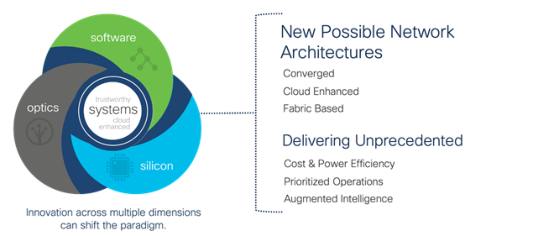According to the Cisco Annual Internet Report 2018-2023, over seventy percent (70%) of the global population will have mobile connectivity by 2023 and much of that traffic will require access to latency-sensitive streaming content or cloud-hosted services. Service Providers must satisfy this growing demand from networked devices with more than just bandwidth augments: they will need to utilize advanced traffic engineering techniques like Segment Routing to maintain the experience requirements of the consumer and content providers.
The growth in latency-sensitive traffic and the move to cloud services will fuel increased bandwidth requirements in every section of the network: edge, aggregation, and core. To keep up with this dynamic and mobile consumption, networks should be built to scale actively with demand and provide network engineers with the ability to implement network slicing and traffic policies that prioritize certain traffic while ensuring the most efficient use of network resources.
Addressing Tomorrow’s Demands
To realize the promise of 5G applications like industrial automation and remote healthcare, service providers are building programmable networks and distributing compute power for MEC designs and locating peering points closer to their edge locations. Supporting these build-outs will be 400G enabled aggregation and core locations that will require tremendous performance capabilities without expanding the network footprint.
The Internet of the Future will be enabled by network infrastructure like the Cisco 8000 Series Routers. They are the first next-generation routers that incorporate Cisco Silicon One, a single-chip ASIC capable of 10 Tbps while providing high-scalability, deep buffers, advanced telemetry, and carrier-class programmability and features in a single rack unit (1 RU) device. As a result, these routers deliver unmatched port density and maintain full routing features at switching speed performance.
In one rack unit, the Cisco 8201 delivers the same performance that required a full rack and fifteen times the power consumption only five years ago. This breakthrough in performance and design means that entire racks could be removed from the network reducing footprints. This new operational economic model allows providers to bring performance and scalability closer to the service edge in support of lucrative latency-sensitive applications.

Industry Recognition
The processing performance, coupled with industry-leading power consumption and cost reduction features, earned the Cisco 8000 Series routers the “Best of Show Award” Grand Prize in the Network Infrastructure category at Interop Tokyo 2020. Selected as an example of outstanding innovation that is certain to drive next-generation IT trends, the review was conducted by a key committee of leading media companies and a review committee formed by experts from academic and business circles.

More Than Just a Pretty Box
The 8000 Series also utilizes cloud-enhanced network software to reduce time to remediation or time to value for service launches. The operating system, IOS XR, integrates real-time cloud analytics and operational insights from cloud applications to ensure that network engineers have access to pertinent, vital information to operate the network efficiently. Additionally, IOS XR’s modular design allows it to be installed in small, memory-constrained devices providing one network OS to manage throughout the network.
Service provider networks have been built to deliver distinct services with unique requirements utilizing specific technologies. The result has been operational complexity arising from the diversity in networking software implementations, protocols, and analytics. This constrains the ability of service providers to deliver seamless experiences to customers independent of their location or the network to which they are connected. Scalability, automated controls and flexibility are the benchmarks for future network infrastructure elements. This combination will help engineers drive operational efficiencies by fully utilizing available network capacity allowing them to prepare and plan for growth, rather than just react to it.

CONNECT WITH US